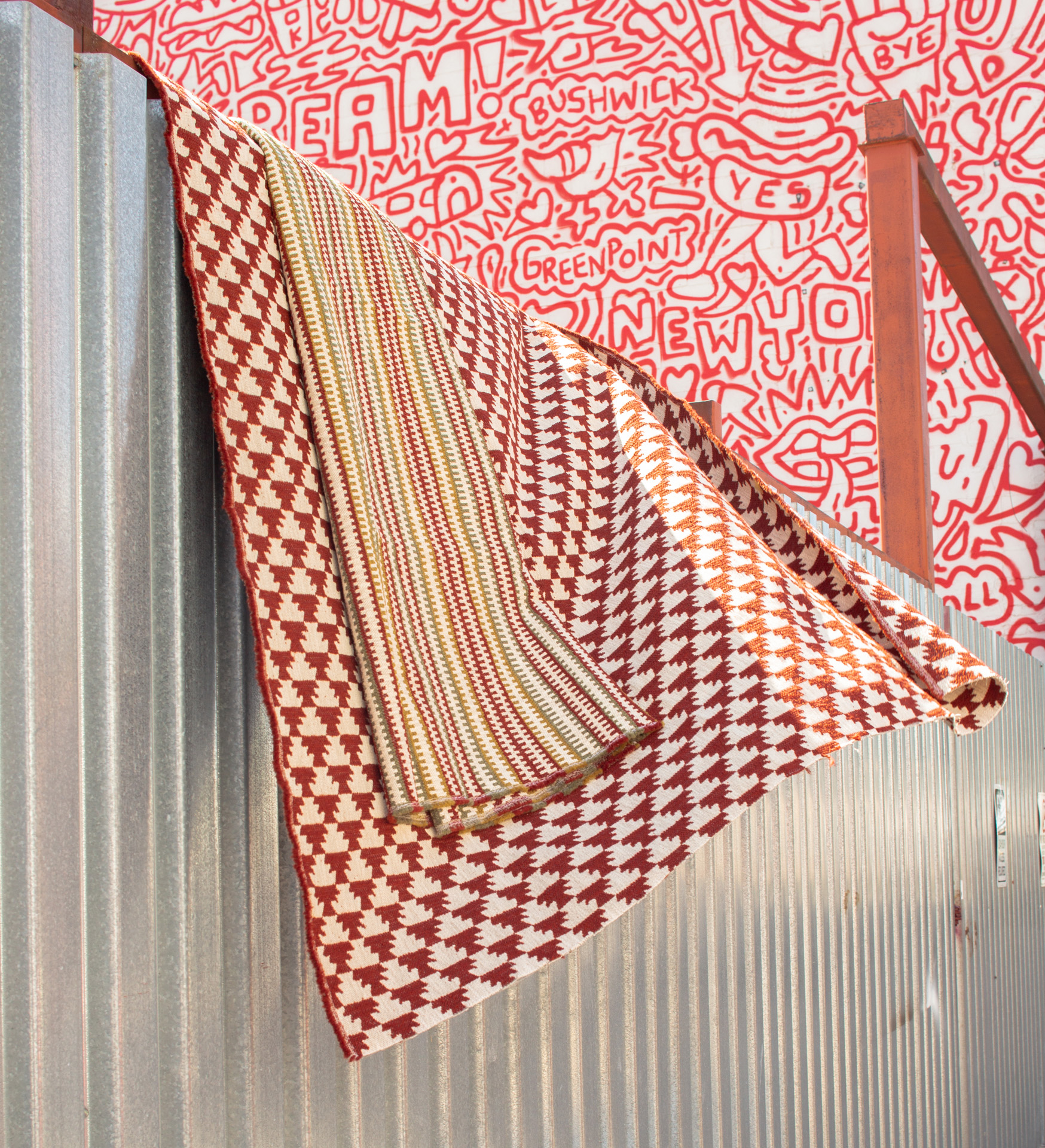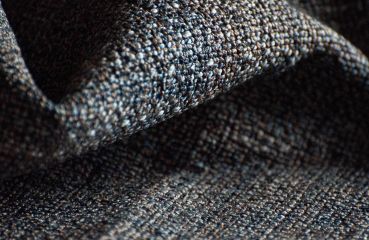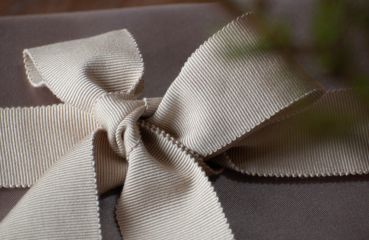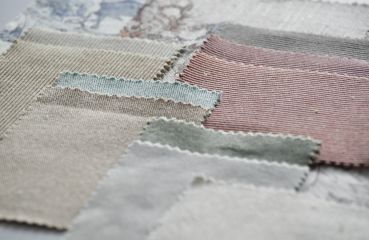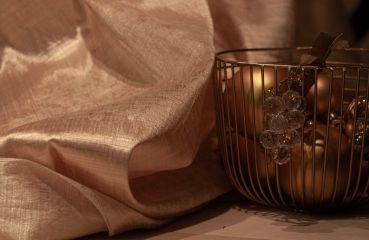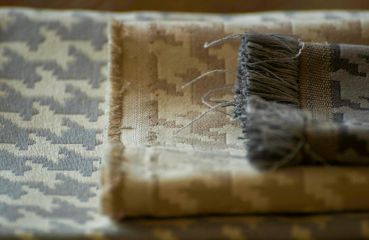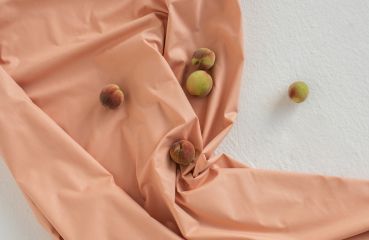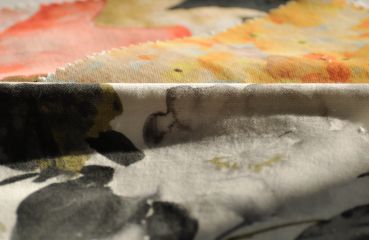about patterned fabrics with local origins
The real meaning of ethno

Williamsburg NYC, August 2022
The term ethno derives from the Greek word ethnos, which means nation, tribe or race. Primarily, however, this ancient term translated into all languages of the world denotes “people”, which is its broadest meaning. Ethnography involves gathering knowledge about customs and objects typical of various cultures. It creates a scientific record of any manifestations of folk traditions, which constitute the essence of the ethno style.
Ethno is defined as a national style referring to the local customs, culture, art or history of a given country and nation. It draws inspiration from remote regions of the globe, often combining various folk motifs into a multi-cultural patchwork. Ethno, boho and folk styles, which often intermingle, share a common origin in folk art and traditional craftsmanship and handicraft.
On the one hand ethno is an antidote to the all-encompassing globalisation and unification. On the other hand, it popularises local patterns in mass produced goods and allows us to experience the exotic regardless of where we live. This is why this style is so popular around the world. The classic ethno style arrived in the Western world as early as the 1960s. Just a decade later it became widely prevalent together with the popular fashion trends shaped by the hippie movement. Since then it has transformed, at the same time retaining its multi-pattern, eclectic nature.
A mixture of local patterns in the modern world.
The modern ethno style offers a variety of choice from among the worldwide wealth of folk traditions. Hindu influences are visible in vividly coloured silk or cotton fabrics with rich intricate patterns, resembling a sari. The Arab version of ethno provides thick, rich, coarse wool with characteristic carpet-like patterns. Africa enhances this style with patterns imitating animal fur and skin, Moroccan clovers, geometric totemic motifs and tribal masks in sunny or tan colours of soil.
The patterns of ethno fabrics are not limited to Africa and Asia. They also include lovely stripped fabrics and native talismans from Latin America. The Mexican variety of ethno uses thick woollen blankets in the colours of the rainbow, resembling traditional striped clothing from the Łowicz region of Poland. Every tribal pattern has its own origin, history or sometimes even a legend – be it Aztec patterns, thick chevrons, Indonesian ikata, Turkish paisley, Iranian botha or African geometric patterns. Yet, while their roots are different, they share the common value of representing people and their skills.
Modern interpretations of traditional patterns recreate the energy and local colours of indigenous cultures supplemented with craftsmanship and handiwork. Ethnic motifs and elements are omnipresent in modern interiors and design. They bring to mind the multi-cultural spirit of great urban centres around the globe. This global trend combines a number of styles that coexist and supplement each other as do people of various ethnicities.
Ethnic patterns inspired by cultural heritage are strong, bold, saturated and spectacular. Most importantly, we can combine and contrast them as we please. When handled this way, they form a rich and colourful patchwork, resembling a multi-cultural melting pot. Designers and stylists agree: when creating ethno interiors we should not limit ourselves to a single country. We should mix and match patterns, even though they originate from a number of cultures.
Colours of an ethnic puzzle.
The majority of authentic ethnic fabrics are natural. They are made from cotton, wool, velvet and silk. Modern decorative fabrics should also resemble authentic craft and should be dyed naturally. Of course, apart from natural materials (linen or cotton), there are also blends with polyester in the form of chenille or jacquard decorative patterns on natural, plain backgrounds.

Colours in the ethno style are mostly hues of the soil: ochre, rust red, olive green, blackberry and roots. Such warm colours work well with terracotta, black, navy blue, stone grey or beige. Ethno uses large, colourful geometric patterns, vibrant stripes and zig-zags as well as vivid plain complementaries. Together they form a spectrum of decorative possibilities for creating eclectic interiors.


Fabrics from the DEKOMA collection used in the session:
A collection of upholstery fabrics inspired by the desert colour palette, traditional Navajo fabrics, brick houses, ironwork products and nature. A modern interpretation of the Southwest style combines rustic and mid-century elements with the artisanal simplicity typical of the American Southwest style to provide a balance between comfort and functionality. The fabrics from the Southwest collection are woven on a cotton warp, which gives vivid depth to the colours yielded by the wool and acrylic blend. The use of bouclé yarn makes them soft to the touch and cosy. A wide range of colours, including terracotta, bronze, copper, gold, grey, ochre and turquoise, has a sophisticated, yet casual character. The collection consists of 3 patterned fabrics in 6 colour variants and 2 monochrome coordinates.
Soft, chenille, jacquard fabrics in trendy colour combinations. Both fabrics despite intense dominating patterns coordinate with each other but can also be juxtaposed with plain Henry FR velour. The Eritrea collection is characterised by ethnic designs, the first one with a large repeat and multicoloured zigzag and the other with a graphic meander pattern. Both can be used as upholstery fabrics. The collection is recommended for ethnic household interiors and for individuals who like intense accents in a sober space.
Pangea is an ethnic pattern inspired by culture-related designs created with artisanal methods. It comes in one multicolour variant on a light beige backing. With its noble flax composition, Pangea is soft and elastic to the touch. The fabric is a perfect choice for decorative use, especially in curtains, cushions and chair covers. It is recommended for ethno- and colonial-style interiors. The fabric requires decating before use.
Creative thought, photos, styling MBBM Studio
Brooklyn, Williamsburg NYC August 2022












